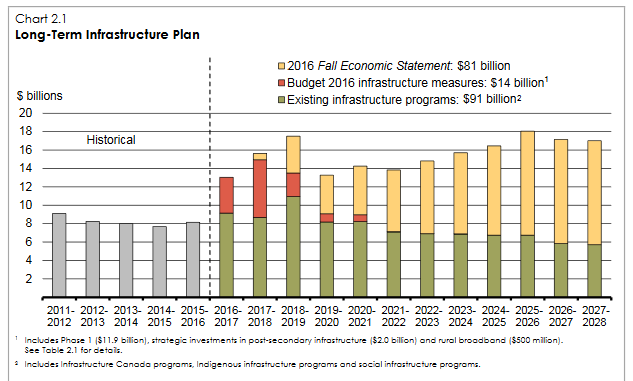It is widely acknowledged that Canada is currently facing a serious infrastructure gap when it comes to such basics as roads, railways and public transit systems. In its latest Fiscal Update (Nov.1, 2016), the Canadian government announced a hefty $81 billion increase in planned infrastructure spending over the next 12 years. Most of the increase in new spending is scheduled for the outlier years 2021 and 2028.
As the following table illustrates, in total the Canadian government’s is committed spending about $180 billion on new infrastructure projects over the next twelve years.
Of course, one never knows the true trajectory of future infrastructure spending. But there is no question that based on the recent history the current short-term plans seem quite ambitious.
The Canadian government also plans to create a Canada Infrastructure Bank to leverage private capital to help escalate Canadian economic growth. The government will seed the bank with $35-billion and hopes to attract private sector dollars at a ratio of $4 to $5 in private funding for every $1 of federal money.
The basic idea behind the infrastructure bank is that it would allow other levels of government that are also pursuing infrastructure programs to borrow money at a cheaper rate (i.e. the federal government borrowing rate). The idea here is to reduce the cost of borrowing so that more large-scale infrastructure projects can get done.

  Source: Government of Canada Fiscal Update, Nov.1, 2016

